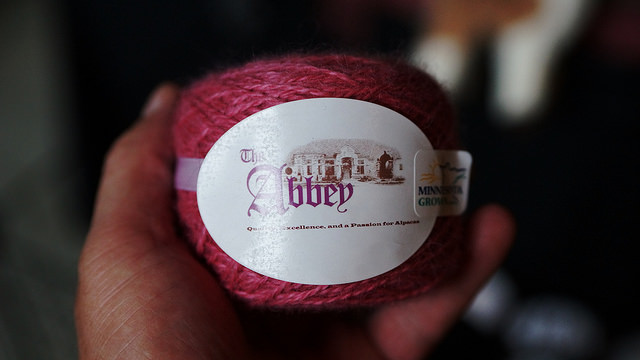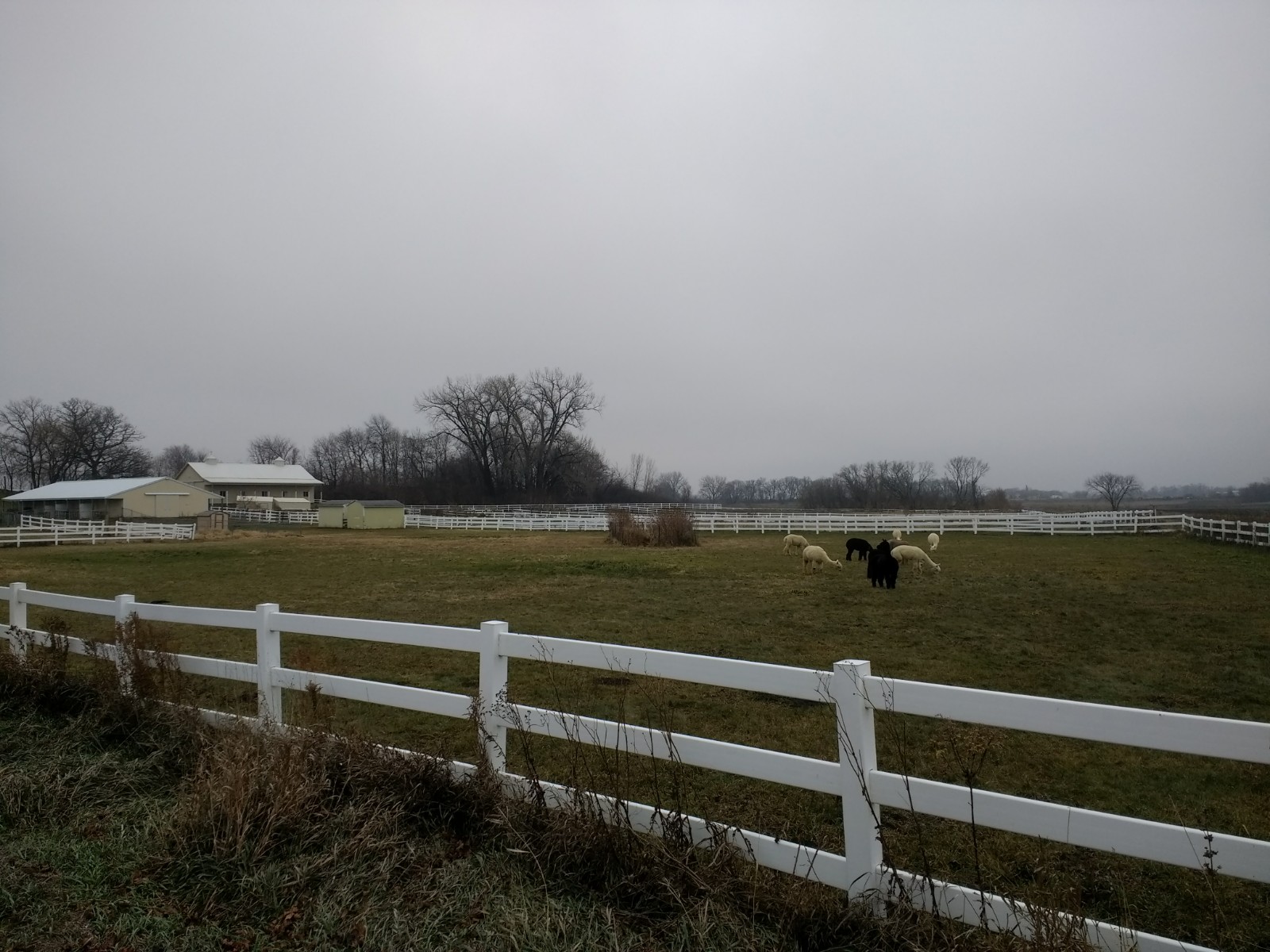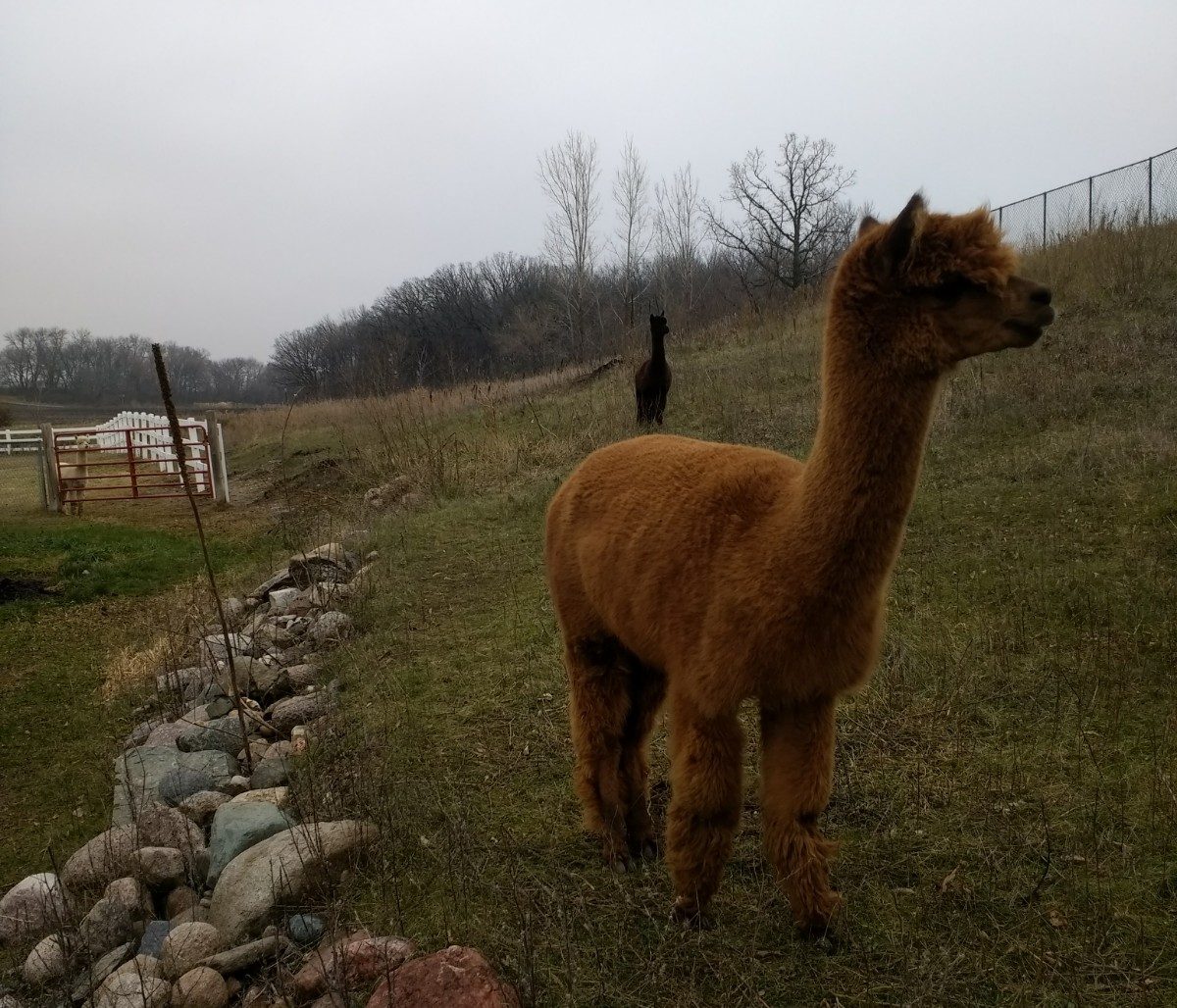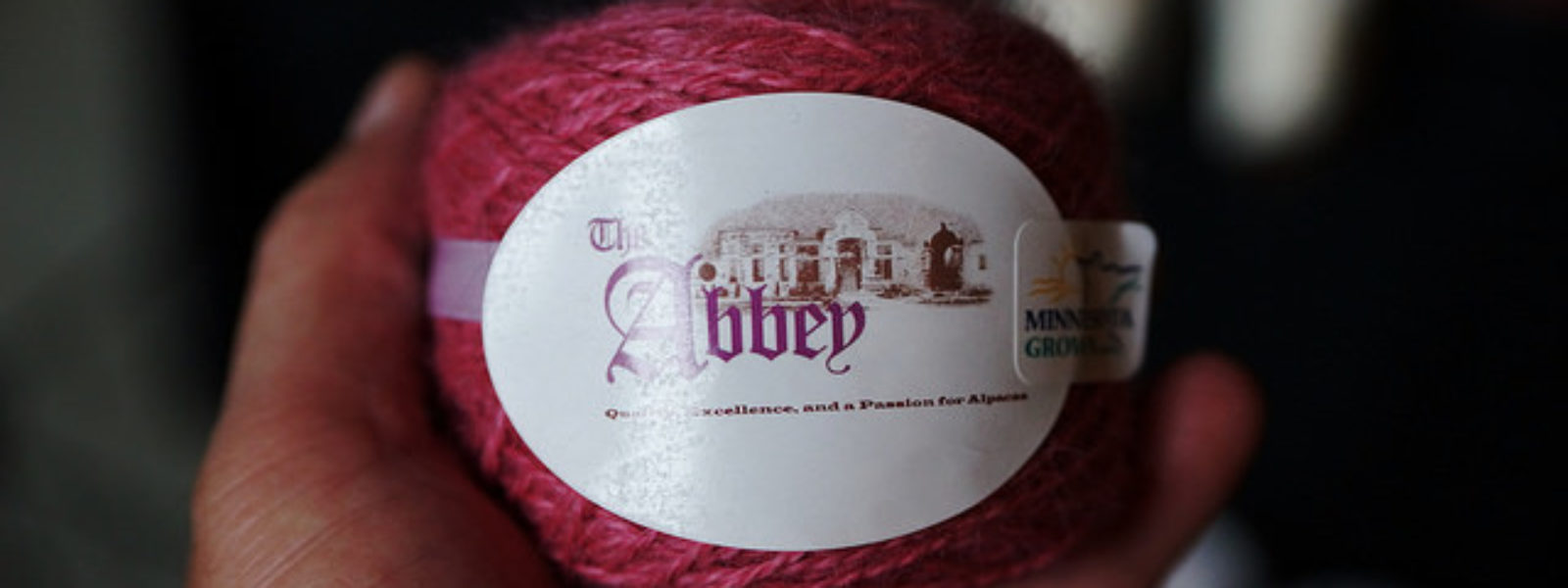A fall trip to learn about a true cottage business
November 16, 2017
Nestled behind fields and away from highway 71 in Hutchinson, MN, you’ll find Ruth Kinkade’s alpaca farm, The Abbey Alpaca. Ruth and her farm manager Todd Fries currently manage a herd of 13 Huacaya alpaca, 4 “brothers” and 9 “sisters,” which they raise for their fine wool. Each animal produces about 10 pounds of wool per year, which Ruth has processed at local mills around the state and to one in North Dakota. When it comes back, spun into different weights of yarn, Ruth dyes it and spends her days knitting socks, baby booties, mittens, scarves from the highest quality wool. She also makes felted boot liners and dryer balls from the less desirable wool, sheered from the legs or neck of the animals. Ruth and Todd sell all of these products, plus yarn, blankets and rugs which are processed off the farm, at the Mill City Farmers Market and a few other regional craft shows.
Alpaca wool is 7 times warmer than sheep wool, due to the cold environment in the South America Andes where the animals are native. Wool quality is measured in microns, and the smaller the fiber the better. Density and fineness makes the wool softer. Leading American alpaca have wool that measures around 15 microns–and those champion male breeders will cost you about $625,000! Most Minnesota alpaca wool is 18-20 microns. To put it all in perspective, merino sheep wool is 24 microns and the highest quality Peruvian alpaca is 8 to 9 microns.

The alpaca, unlike most of us, are happy when the temperatures start to drop this time of year. Their wool is filled with air to keep them extra warm. Even though the animals are sheered every spring, Ruth and Todd explained that in the summer they still need to watch the herd to make sure they stay cool. Ruth and Todd spray the alpaca with the sprinkler and even keep fans and kiddie pools in the barn. Todd knows all the tricks like this. He has been raising alpaca for 22 years and is one of the leading experts in Minnesota.
“You have to be around them every day,” he explains. “You get to know the way they walk and move, so you know if something’s wrong.”
Ruth hasn’t always been a farmer. She retired from Minneapolis real estate 14 years ago to pursue her dream of raising animals.
“Friends always ask me, don’t you get scared living alone out there?” Referring to her farm about an hour west of the cities. “What’s there to be afraid of? There’s nothing out here!” Ruth is truly at peace surrounded by stars, the Northern Lights and the quiet of the country.

“When you’ve had a day where you come home and just want to kick the dog, I’ll come down here, sit in the barn and listen to [the alpaca] hum. It really brings you back to realty.”
Yep, Alpaca’s hum. Todd explained that not only do these herd animals hum when they’re happy or to warn others about predators, but the male alpacas also make a call that causes females to ovulate. Alpacas don’t go into heat, they can breed anytime. What’s even more impressive is that gestation is typically 11 1/2 months (350 days). Females can also “pause” birth if the baby is about to be born in the evening and resume it again the next morning so the cria (google it) doesn’t freeze to death in the cold night.
You can find Ruth and Todd of The Abbey Alpaca at our fall markets and indoor winter markets. Their local wool products make great holiday and hostess gifts!

